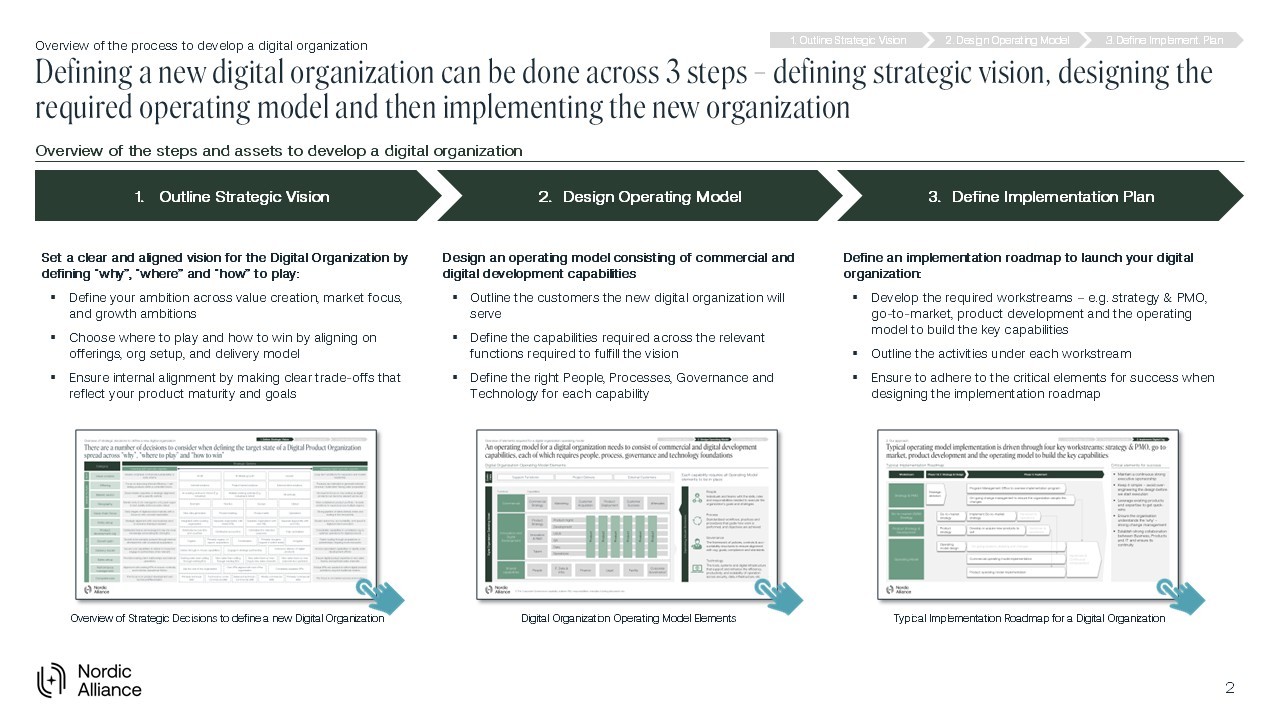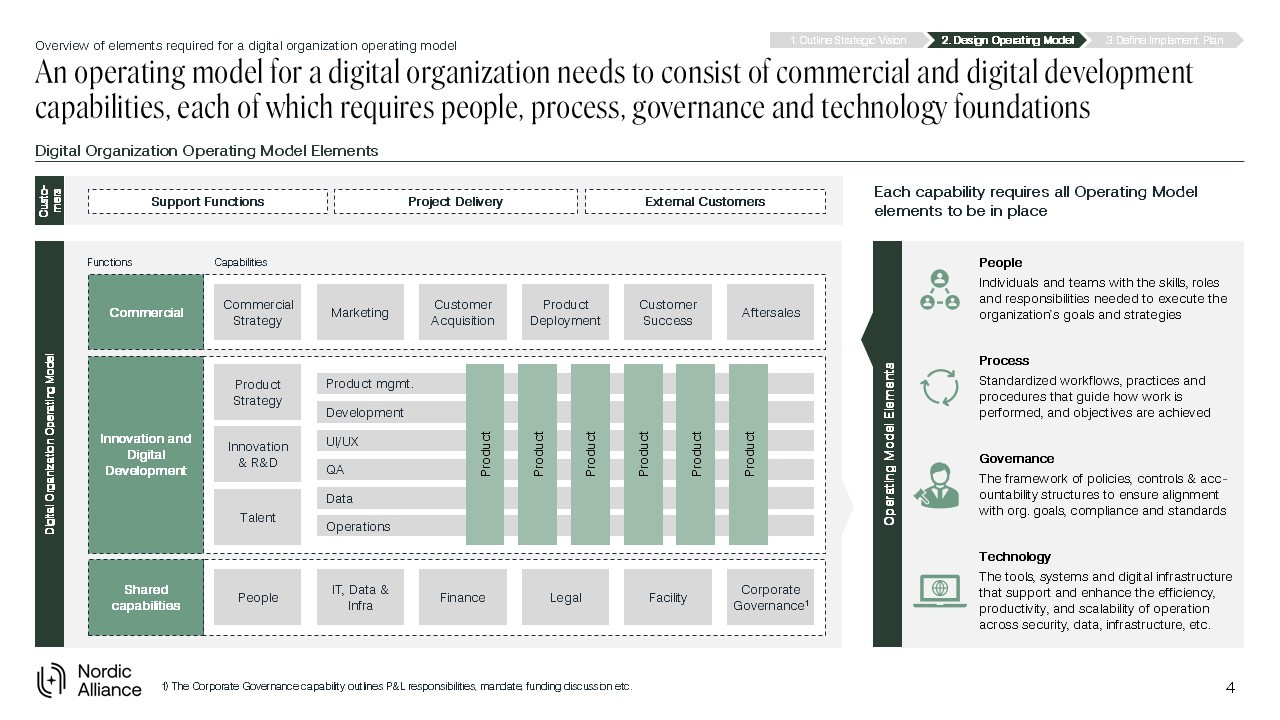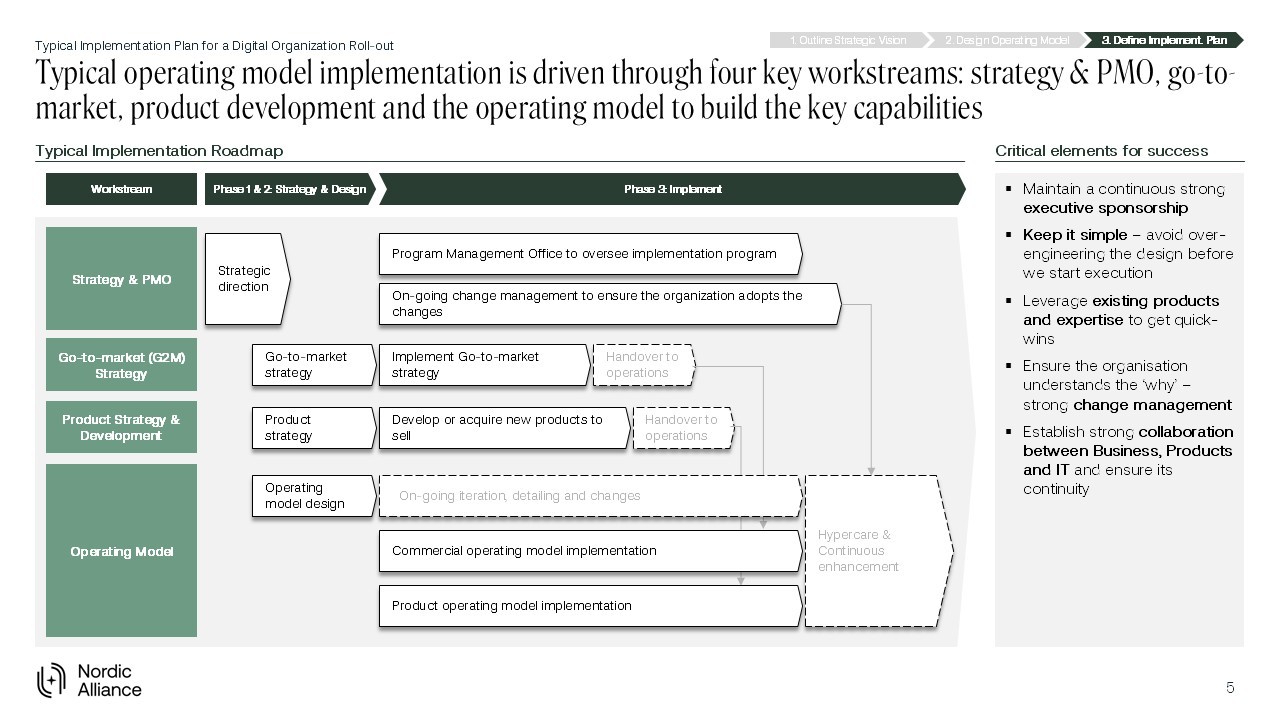



Engineering consultancies and other service-led organizations can no longer afford to rely solely on the billable hour business model. To stay competitive, they must turn their expertise into customer-focused digital products. Gartner projects the digital product engineering (DPE) services market will grow at a rate of 10.4% until 2028, rising from $216 billion to $354 billion, significantly outpacing the broader engineering services market, which is expected to grow at just 4.2% CAGR between 2025 and 2030. This shift is driven by clients demanding more scalable, data-driven solutions. Today, expert advice and static reports alone aren’t enough; clients expect automated tools, interactive platforms, and real-time insights that deliver faster and greater value with fewer billable hours. At the same time, margins in traditional service models are tightening, putting pressure on firms to find new, more efficient ways to deliver value - making digital products not just a growth opportunity, but a necessity to remain profitable.
To meet this demand, leading engineering consultancies are increasingly developing their own reusable software solutions to complement their human advisory services. These include carbon assessment platforms, simulation tools, AI-powered dashboards, and IoT-enabled monitoring systems. For example:
The payoff is significant: Digital products offer scalability, efficiency, and recurring revenue. As PwC highlights, 29% of digital leaders across industries (automotive, machinery and electronics, chemicals and process industry) already generate over 30% of their revenue from new (digital) products that are less than two years old. Unlike traditional models, where more projects mean hiring more people or billing more hours, digital solutions can be built once and sold repeatedly (via subscription or licenses) - creating predictable high-margin revenue streams and stronger client relationships.
However, capturing these benefits requires more than a good product. It calls for a new operating model - one that supports continuous product development, scalable delivery, and a mindset shift from bespoke project work to platform thinking. For many organizations deeply embedded in traditional project-based ways of working, this shift can be particularly challenging. The key barriers, as well as strategies to overcome them, are explored further in this article.
In the following sections we explore how engineering service organizations can structure their digital product operating models to drive growth and long-term competitiveness.

Transforming a traditional service business into a digital product organization typically unfolds in three steps. First, set a clear strategic vision, outlining where you're going and why. Second, design an operating model that makes it possible to deliver on that vision. Finally, roll it out through a phased implementation, starting small, learning as you go, and scaling what works.
Throughout the article, we’ve included a set of tools developed from our project experience in supporting service-led organizations through their transition to digital product organizations. These assets are designed to guide decision-making at each step of the way.
Defining a strategic vision is the essential first step in building a digital product organization. It sets the overarching ambition for the transformation towards a digital product organization, clarifying why digital products are being pursued, where to compete, and how to create value.
This vision requires making deliberate choices across several dimensions, including value creation, offering type, market focus, and organizational structure. Whether the goal is operational efficiency, innovation, new revenue streams, or competitive differentiation, the vision must articulate how digital products fit within the broader business strategy.
It also involves navigating critical trade-offs. Should digital efforts prioritize short-term profit or long-term market leadership? Will the focus be on internal tools or external client solutions? Should the organization embed digital into existing business units or build a standalone entity? Will growth come through organic development or partnerships and acquisitions? These decisions reflect different levels of strategic intent and product maturity, shaping how digital efforts are aligned with the desired future state.
A strong strategic vision not only provides direction but also establishes clear boundaries that focus organizational efforts and ensures the whole organization understands and aligns its actions with its overall mission and goals.
The figure below outlines key strategic choices to help define your target state as a digital product organization.

Once the strategic vision is clear, the next step is designing the operating model to support it. A good operating model defines how the organization will consistently build, deliver, and support digital products at scale. It should reflect the strategic vision directly - aligning people, processes, governance, and technology with the goals that were set.
Firstly, the operating model should define the customers the digital organization will serve. Whether internal support functions, project delivery teams, or external customers, each of these target groups has different needs, expectations, and success metrics. By identifying the primary “customers” of the digital organization, organizations can better determine which capabilities to prioritize, how to structure cross-functional collaboration, and where to focus product development efforts. For example, if the strategic vision prioritizes offering external client solutions, the operating model must include strong sales and client management capabilities to ensure that digital offerings are effectively commercialized and adopted in the market. In contrast, if the focus is on internal tools, the organization should emphasize change management and internal stakeholder engagement to drive adoption and realize operational value. These strategic choices directly shape the design of the operating model - ensuring it is not one-size-fits-all, but purpose-built to deliver on the organization’s specific digital ambition.
The next step is to map the core capabilities required to execute the strategy and deliver value to the target customers. A strong digital product operating model should combine both commercial and digital development capabilities, ensuring seamless collaboration across functions such as product management, customer acquisition, marketing, development, and operations. Each of these capabilities requires the right people, processes, governance, and technology to be in place. This includes clearly defined roles and responsibilities, standardized workflows, accountability structures, and modern tools and digital infrastructure. On top of that, a well-designed operating model also integrates shared capabilities like finance, legal, data, and IT infrastructure, ensuring they are aligned with product-centric workflows.
The figure below outlines an example of the core capabilities that can make up a digital operating model, along with the key enablers required for execution. These capabilities and enablers will vary depending on each organization’s strategic vision, target customers, and maturity level.

With the strategic vision and operating model in place, the final step is to develop a clear and actionable roadmap to implement the digital organization. Successful implementation is not a single initiative but a coordinated effort across multiple workstreams. Typically, four key areas drive this transformation: strategy and PMO, go-to-market (G2M) strategy, product strategy and development, and operating model.
Each workstream plays a distinct role. The Strategy & PMO workstream ensures strategic direction and executive alignment while overseeing program governance and change management. The G2M stream defines how digital offerings will reach the market and supports implementation until handover to operations teams. Product strategy and development focuses on building or acquiring the right digital products to serve target users. Meanwhile, the operating model workstream ensures that both commercial and product delivery models are activated and scaled with appropriate iteration, feedback loops, and continuous improvement mechanisms.
Critical to success is following a few guiding principles: maintain strong and visible executive sponsorship, avoid over-engineering the model before implementation begins, and build early momentum by leveraging existing assets and capabilities. Organizations must also invest in robust change management to ensure everyone - from senior leadership to frontline teams - understands the “why” behind the shift. Finally, strong collaboration between business, product, and IT functions must be established and maintained throughout.
The figure below illustrates an implementation roadmap across the four core workstreams, along with the sequencing and handovers that drive a successful transformation.

Drawing from our direct experience, the following challenges are those we’ve repeatedly seen organizations face when shifting to digital product development models.
A. Talent, Capabilities & KPIs
Many face talent and capability gaps, lacking expertise in product management, UX/UI design, and agile delivery, limiting their ability to build and scale digital products effectively. Addressing this requires targeted upskilling, mentorship, and strategic hiring to close key competency gaps. Traditional KPIs and siloed team structures also pose significant barriers. To support a product-oriented approach, firms should redesign performance metrics to prioritize long-term value over billable hours and to encourage cross-functional collaboration.
B. Data & Technology
Moreover, fragmented and poorly governed data prevents teams from generating actionable insights or leveraging analytics. Building strong data governance, unified platforms, and promoting data literacy are essential steps toward becoming digital. Technology and infrastructure limitations, particularly legacy systems and rigid compliance processes, can slow development and restrict scalability. Modernizing the tech stack with cloud-native tools and modular architecture is critical to enabling faster, more flexible product delivery.
C. Organization Culture & Customer Centricity
Cultural and change management barriers are also significant because digital transformation is often viewed as an IT initiative rather than an organization-wide shift, leading to resistance and lack of buy-in. A compelling change narrative, visible executive sponsorship, and early employee engagement can help build trust and momentum. Finally, a disconnect between internal priorities and customer value can result in digital products that miss the mark. Embedding customer research, co-creation, and feedback loops throughout the product development process ensures that digital solutions are intuitive, relevant, and aligned with specific customer needs.
Engineering service firms are standing at a crossroads. Those that successfully evolve into digital product organizations will unlock scalable growth, recurring revenue streams, stronger client relationships, and lasting competitive differentiation. Those that don’t risk falling behind, as margins shrink and clients increasingly demand digital-first solutions.
This transformation requires a deliberate and structured three step approach: crafting a clear strategic vision, designing a new product operating model, and executing a phased implementation. Digital products aren’t just a growth opportunity - they’re a way to embed your organization’s expertise into tools, platforms, and systems that scale beyond individual projects, ultimately making your business more resilient, efficient, and impactful.
That said, the transition to a digital product organization doesn’t come without challenges. Many organizations face gaps in digital capabilities, structural misalignment, technology and data limitations, cultural resistance, and weak connections to customers. Successfully navigating these barriers requires investment in talent, modernized infrastructure, redesigned incentives, and a strong focus on customer-centric design and change management.
If your clients are already asking for more than traditional consulting, expecting digital tools, automation, and real-time insights, the question isn’t whether to make the shift. It’s how to do it in a way that scales, sustains, and delivers value long into the future.
Nordic Alliance is a consultancy specializing in digital transformation. If you have questions about your transformation journey or would like to discuss any of the insights above in more detail, feel free to get in touch.
We are always eager to connect, exchange ideas and learn. Whether you want a fresh perspective on a challenge, to explore strategic opportunities or to just grab a great cup of coffee, we would love to hear from you.
Or visit us anytime at Rahbeks Alle 21.
